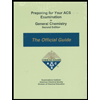
Concept explainers
Interpretation:
The type of hybrid orbital used in
Concept Introduction:
The process of intermixing of atomic orbitals of same atom to form an equal number of hybrid orbitals is called hybridization. Such hybrid orbitals have same energy and the same shape. It is determined by evaluation of number of hybrid orbitals
The formula to calculate
Here,
The type of hybridization that corresponds to different number of hybrid orbitals is depicted in following table:
Want to see the full answer?
Check out a sample textbook solution
Chapter MS Solutions
PREPARING F/YOUR ACS EXAM IN GEN CHEM
- How many valence electrons are used in predicting the Lewis Dot structure of CH4? a) 8 b) 6 c) 10 d) 2arrow_forwardHow many valence electrons are used in predicting the Lewis Dot structure of CO2? a) 32 b) 26 c) 24 d) 16arrow_forwardHow many valence electrons are used in predicting the Lewis Dot structure of NO2? a) 17 b) 12 c) 5 d) 10arrow_forward
- A compound that is bonded with an ionic bond is unlikely to dissolve in water. True or Falsearrow_forwardIn VSEPR Theory, AX6 is a) linear b) tetrahedral c) octahedral d) trigonal bipyramidarrow_forwardElectronegativity is the ability of an atom to attract an electron pair needed for covalent bonding. True or Falsearrow_forward
- A single bond is called a) sigma bond b) pi bond c) hybrid bond d) hydrogen bondarrow_forwardPredict the major organic products of the reaction below and draw them on right side of the arrow. If there will be no significant reaction, check the box below the drawing area instead. 田 m D H Cl H H There will be no significant reaction. + G હે Click and drag to start drawing a structure.arrow_forwardBased on the definitions for different types of bonding, which of these compounds should have the highest melting point? a) NaCl b) O2 c) CH4 d) N2arrow_forward
- Which of these compounds is held together by covalent bonding? a) CCl4 b) NaCl c) FeCl3 d) KBrarrow_forwardIn VSEPR Theory, AX4 is a) linear b) tetrahedral c) octahedral d) trigonal bipyramidarrow_forwardValence electrons a) form covalent bonds & are in the outer electronic shell b) form covalent bonds & are in the inner electronic shell c) hold ions together by electrostatic interaction d) are generally weaker than other bondingarrow_forward
 ChemistryChemistryISBN:9781305957404Author:Steven S. Zumdahl, Susan A. Zumdahl, Donald J. DeCostePublisher:Cengage Learning
ChemistryChemistryISBN:9781305957404Author:Steven S. Zumdahl, Susan A. Zumdahl, Donald J. DeCostePublisher:Cengage Learning ChemistryChemistryISBN:9781259911156Author:Raymond Chang Dr., Jason Overby ProfessorPublisher:McGraw-Hill Education
ChemistryChemistryISBN:9781259911156Author:Raymond Chang Dr., Jason Overby ProfessorPublisher:McGraw-Hill Education Principles of Instrumental AnalysisChemistryISBN:9781305577213Author:Douglas A. Skoog, F. James Holler, Stanley R. CrouchPublisher:Cengage Learning
Principles of Instrumental AnalysisChemistryISBN:9781305577213Author:Douglas A. Skoog, F. James Holler, Stanley R. CrouchPublisher:Cengage Learning Organic ChemistryChemistryISBN:9780078021558Author:Janice Gorzynski Smith Dr.Publisher:McGraw-Hill Education
Organic ChemistryChemistryISBN:9780078021558Author:Janice Gorzynski Smith Dr.Publisher:McGraw-Hill Education Chemistry: Principles and ReactionsChemistryISBN:9781305079373Author:William L. Masterton, Cecile N. HurleyPublisher:Cengage Learning
Chemistry: Principles and ReactionsChemistryISBN:9781305079373Author:William L. Masterton, Cecile N. HurleyPublisher:Cengage Learning Elementary Principles of Chemical Processes, Bind...ChemistryISBN:9781118431221Author:Richard M. Felder, Ronald W. Rousseau, Lisa G. BullardPublisher:WILEY
Elementary Principles of Chemical Processes, Bind...ChemistryISBN:9781118431221Author:Richard M. Felder, Ronald W. Rousseau, Lisa G. BullardPublisher:WILEY





